The Sartorial Feast of Feudal Japan with “Shōgun” Costume Designer Carlos Rosario – Part Two
In Part One of our conversation with costume designer Carlos Rosario, we talked about the monumental effort his team went through to research, design, and handmake 2,300 costumes for FX Networks’ gripping historical saga. We continue the discussion today on how his team designed a distinct closet for each of the three main characters.
Unlike most other projects, Rosario could not design a collection that could be utilized throughout the series. As the story moves from the royal court to Ajiro village and the battlefield, and from tea ceremony to palace intrigue to war, his team dressed hundreds of characters: the samurais, koshōs (the equivalent of a squire to a warlord), and soldiers in battle; the lords and ladies in the royal court; the courtesans in the teahouses; and the villagers in Ajiro, all with varying looks. “Sometimes it took two or three people to dress each character in armor, and we had so many in some of the battle scenes.” On one occasion, he spoke with costume designer Kazuko Kurosawa (daughter of filmmaker Akira Kurosawa), who did not work on the series but offered valuable insight on whether the lords would tone down their wardrobe when visiting the villages. “I was wondering if their costumes should be more like what everyone else was wearing around them. But she said no, that’s actually when they want to show their wealth and power.”

“When I first read the script, two words came to me: ‘texture’ and ‘colors.’ In the novel, Ishido’s [Takehiro Hira] army is described as the gray army, and brown for Toranaga’s [star/producer Hiroyuki Sanada],” Rosario reveals of the color palette used for the different armies and, by extension, their lords. “That was the starting point. For Toranaga, what is more elegant than brown? Gold and copper. That gave me a framework for each of the lords. Even though that wasn’t how it was done, we wanted to respect the novel. It is also easier for the audience to visually understand who’s part of which clan and follow the storyline.”


When it came to texture, each group of characters has distinct qualities to delineate rank, wealth, and power. “For the residents in Osaka, I used a pale color palette with subtle patterns and mostly linens. The nobles wore luxurious costumes made of silk, elaborated hand-painted textiles, and lots of embroidery, and many layers to signal wealth and abundance. The villagers in Ajiro wore rustic, textured, natural fabrics like hemp, which was the predominant fabric of that time and reflected their connection to nature.”
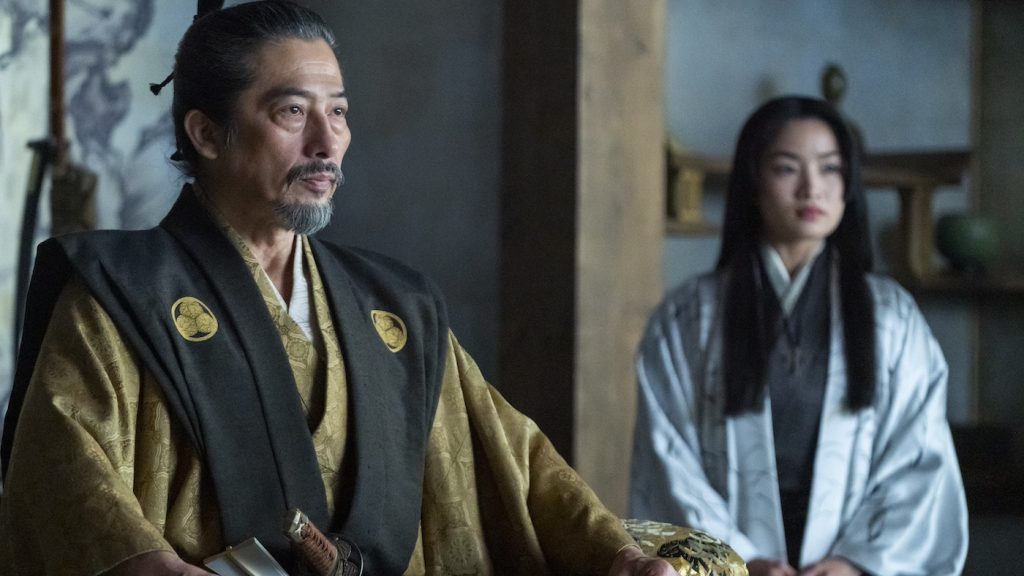

The most intricate costumes for Toranaga was his armor, which Rosario made from leather rather than metal. Not only was leather more period-appropriate, but it was also more comfortable for the actors. “At first, we looked at renting armor from Japan, but it was too expensive. Once we decided to make everything, I thought, why not make them as light as possible to keep the actors happy? I remember Hiro [Sanada] told me it was the lightest armor he has worked with,” Rosario says. But there was another reason for using leather: since Japan had been fighting a civil war for over 100 years by this point, he wanted to give the armor a battle-worn look. “You can break down leather easily and age it to give it life and depth. I wanted the armor to look worn down – there’s an ongoing power struggle with the lords, they’re going into battle, and everything is sort of falling apart. I wanted the audience to relate to that visually.”


Like the other lords, Toranaga has several jinbaoris (陣羽織), the stunning vests worn over his armor before going into battle. “Besides acting as an extra layer of protection, it also shows wealth. Each is handmade with 20-25 different fabrics, trims, and a painted crest. One of Toranaga’s has hundreds of peacock feathers, each attached to the base fabric by hand. I had a lot of fun designing the jinbaoris,” Rosario says about the vests that took hundreds of hours to make. Some of his favorites are the ones made for one of Toranaga’s vassals, the volatile and serpentine Lord Yabushige (Tadanobu Asano). “Since he is edgier and grittier, I was even more creative with his jinbaori and added black spiky swan feathers to give it some attitude,” he adds.

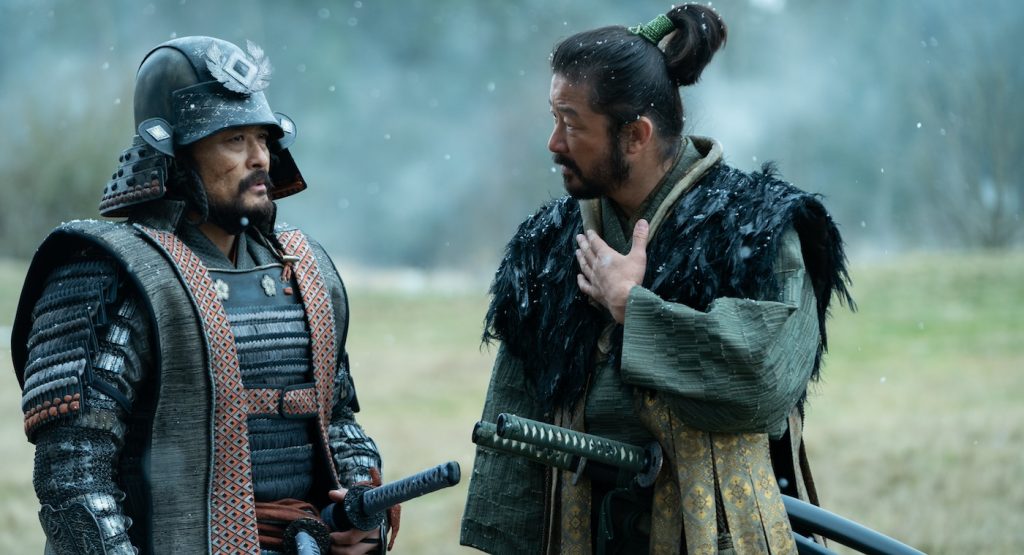
John Blackthorne (Cosmo Jarvis), a beleaguered stranger trapped in a foreign land, is at the mercy of his captors. Slowly but surely, he figures out how to survive by learning the Japanese way of life. “I had to convey his evolution from the stranded sailor to when he begins to blend into Japanese culture. The first time they dress him in a kosode (小袖) is the beginning of that evolution,” Rosario shares. [Kosode is the standard unisex garment that serves as the precursor to the modern kimono (着物).] “But we also needed to contrast him with the Japanese characters because he is also at the heart of the story. So, I kept his clothes very subtle and muted, mostly because he’s powerless in that environment.”
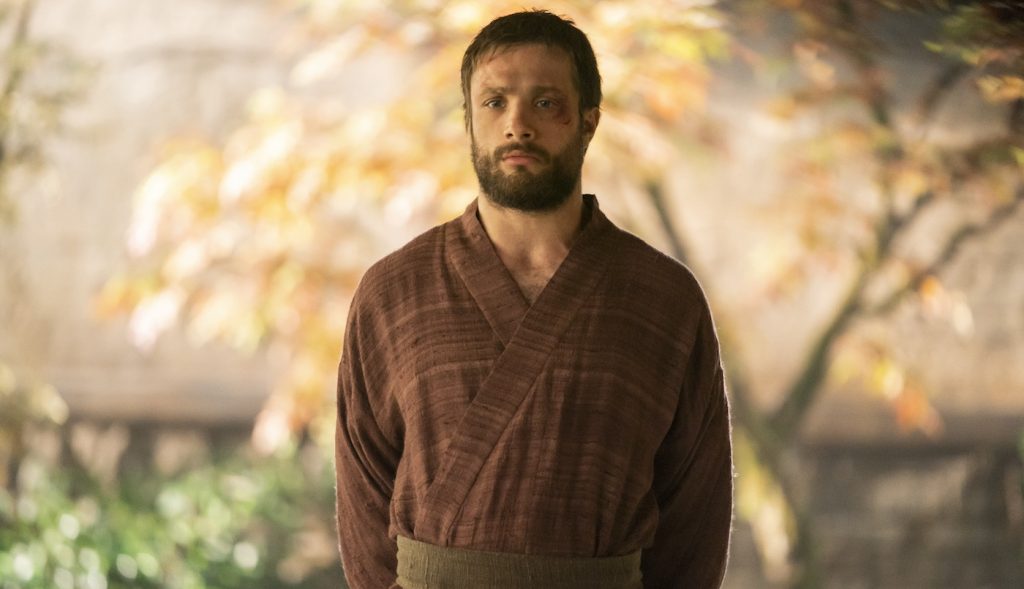
“His fabrics are very textured, raw silks and linens; some of his kosodes were handwoven in Vancouver over several weeks,” Rosario continues. “After that first kosode, he also gets hakama pants. When he leaves Osaka to go on the fields, he gets into the tattsukehakama (裁着袴), which are hakama pants tied at the bottom with gaiters to make them more functional.” The first formal piece that Blackthorne wears is a kataginu (肩衣), a vest with broad wing-like shoulders inspired by Chamberlain’s white and brown kataginu in the original miniseries. “It was such an iconic costume – anytime anyone thinks of Richard Chamberlain in Shōgun, they think of that outfit. So that was our homage to the ‘80s miniseries.”

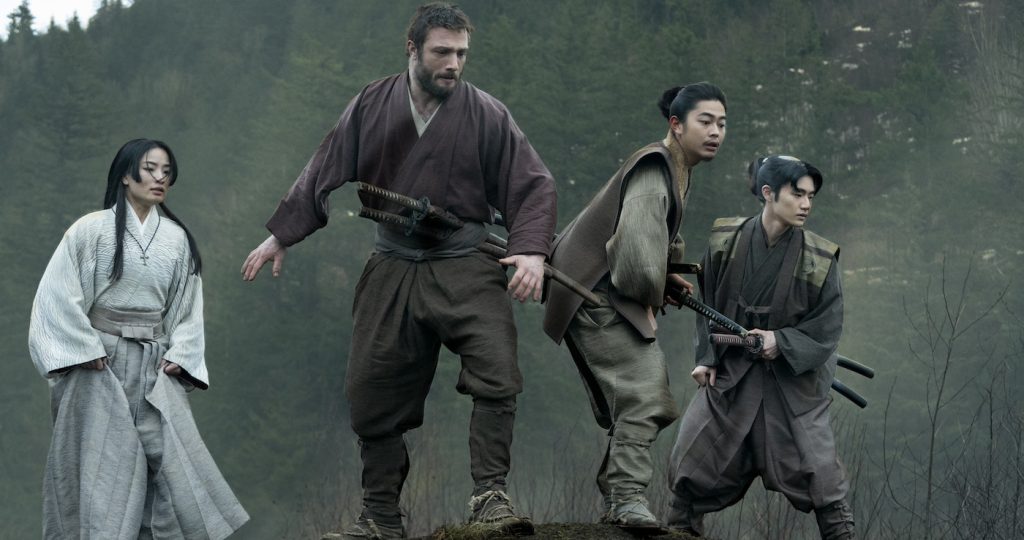
The sartorial feast continues with Mariko’s [Anna Sawai] wardrobe, which evolves as she moves beyond the crestfallen and subservient wife. When we first meet her, she is stoic and merely going through the motions, bearing the shame of her family name. As Toranaga admits, her husband’s decision to forbid her from committing seppuku “kept you from your fight, robbed you of purpose.” Her melancholy and emptiness inspired Rosario to start her wardrobe with a winter motif. “She was lifeless in a way. The first thing that came to me was a branch without flowers; there was nothing blooming. So, we started with her wearing monochromatic colors, the patterns have snow covering the grass. That was my way of showing a woman who felt empty; she was like a ghost,” he explains. But as she finds more courage and agency, “it goes from the winter concept to camellias blooming, and more colors and patterns are added as she finds her path, her empowerment, and her voice towards the end of the story.”

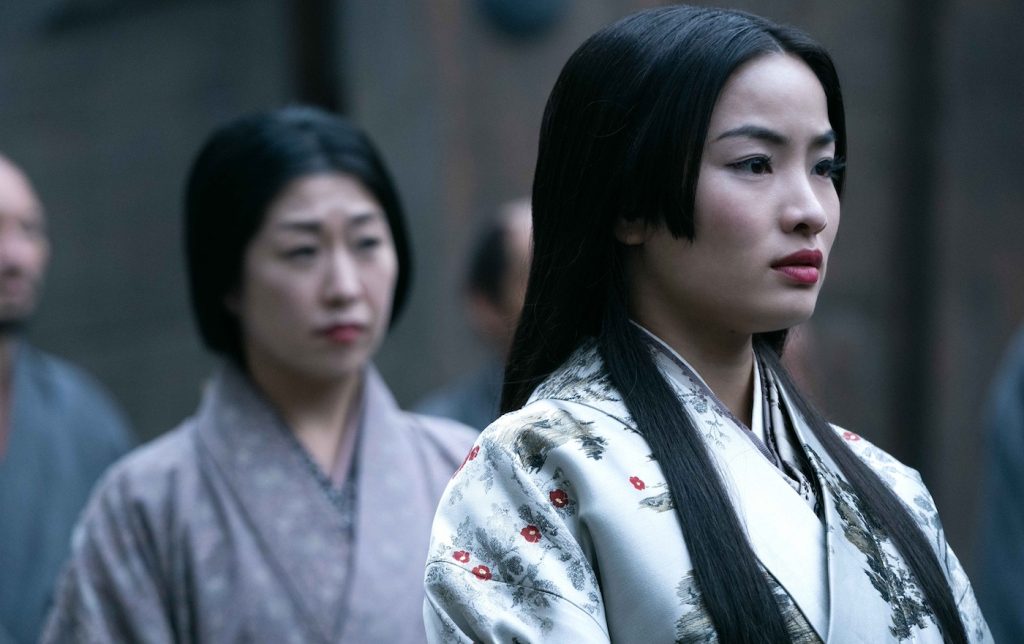

The first five episodes of Shōgun are available to stream on Hulu.
Featured image: “SHŌGUN” — Pictured: Hiroyuki Sanada as Yoshii Toranaga. CR: Kurt Iswarienko/FX



